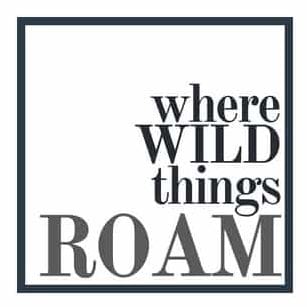Safari in Sri Lanka’s Yala National Park
Few places have as many Unesco World Heritage Sites in such a small space than Sri Lanka.
There are in fact eight packed into such a small area, and you will want to see them all. Sri Lanka’s 2000-plus years of culture can be discovered at ancient sites where legendary temples boast beautiful details even as they shelter in caves or perch on prominent peaks.
Across the island, the wildlife is just as predominant and intriguing with safari tours of Sri Lanka’s pleasantly relaxed national parks encountering leopards, water buffaloes, all manner of birds and a passel of primates.
One national park that is worth the visit in Sri Lanka is Yala National Park, the second largest national park in the country. Yala is home to Asian elephants, leopards and variety of beautiful endemic birds.

Yala combines a strict nature reserve with a national park. Divided into 5 blocks, the park has a protected area of nearly 130,000 hectares of land consisting of light forests, scrubs, grasslands, tanks and lagoons. Two blocks are currently opened to the public.
There are six national parks and three wildlife sanctuaries in the vicinity of Yala. Among the largest is Lunugamvehera National Park. The park is situated in the dry semi-arid climatic region and rain is received mainly during the northeast monsoon.
Situated in Sri Lanka’s south-east hugging the panoramic Indian Ocean, Yala was designated a wildlife sanctuary in 1900 and was designated a national park in 1938. Ironically, the park was initially used as a hunting ground for the elite under British rule. Yala is home to 44 varieties of mammal and 215 bird species. Among its more famous residents are the world’s biggest concentration of leopards, majestic elephants, sloth bears, sambars, jackals, spotted dear, peacocks, and crocodiles. The best time to visit Yala is between February and July when the water levels of the park are quite low, bringing animals into the open.

There are four Gates to the Park. Gates at Palatupana and Katagamuwa leading to Blocks 1 & 2 remain the most visited. However, the two Gates at Galge on the Buttala-Kataragama Road, covering Blocks 3 & 5 are becoming known among visitors who do not want to contribute to congestion. There are reports of frequent sightings of leopards on these routes, too.
If you are traveling on the Buttala-Kataragama Road, watch out for wild animals, especially elephants. This road literally runs through the park and some elephants are in the habit of soliciting fruits from motorists by standing across the road, allowing passage once appeased. However, elephants will give way when a vehicle approaches and are known to be well-mannered. Don’t assume every elephant venturing on to the road to be people-friendly. Drive cautiously; never alight your vehicle.
The area around Yala has hosted several ancient civilisations. Two important pilgrim sites, Sithulpahuwa and Magul Vihara, are situated within the park.
Plan your Safari

If you are entering the national park yourself, a 4WD vehicle is recommended. The best time to enter the park is when the park opens just after 6:00am or after 4:00pm when animals resurface after taking cover from the sun. Leave adequate time to arrive at the park at the planned entry time. Entry will cost approx. USD$25 per adult plus a vehicle fee.
You may also opt for a full day tour. There are plenty of tour companies offering full day tours. This will cost around AUD$80-100 per person and comes with a ranger/guide which can e helpful in identifying wildlife as their knowledge is extensive.
Pack your camera gear, water and a light lunch as you can spend all day in the park. There are toilet facilities, but these are limited.
Remember you are in a National Park. Take only photos and leave nothing behind. Obey the rules and respect the wildlife.
Where to stay

Here you will find Jetwing Yala and Jetwing Safari camp, positioned between the Indian Ocean and the natural wonders of Yala National Park. These two Jetwing properties rest within an uncharted patch of coastal wilderness at the end of Sri Lanka’s southern shoreline. However, they are both very different in their style and offering.
Jetwing Yala

A place to really immerse yourself in nature while still enjoying the luxury of a 5-star property, Jetwing Yala sits harmoniously in its surroundings with a tread lightly approach to tourism. There is no time or schedules. Just a relaxed atmosphere where you can fill your days at your own pace.
There are only a handful of places on earth where you may wake up to the calls of a tropical wild while also listening to the sound of crashing waves on the beach. Emerging out of the coastal wilderness, Jetwing Yala embodies the true spirit of nature with a balance of sustainable coexistence. This commitment to sustainability remains at the heart of Jetwing properties, and it is no different at Jetwing Yala. The property sets an example for responsible tourism with a number of initiatives that preserve, protect, and promote the luxurious surroundings.
Jetwing Safari Camp

Glamping in Sri Lanka doesn’t get much better than at Jetwing Safari Camp, located in the picturesque dunes of coastal Yala. A sister property to Jetwing Yala, at Jetwing Safari Camp you can really get amongst nature while still enjoying the luxury of Jetwing Yala.
Ten rustic tents are a graceful step up from the simple collapsible poles and fabric, but remain a natural fit to the surrounds, complemented by the soothing rumble of the ocean and the cooling breeze. Each tent has a spacious wooden deck where guests can sit and enjoy the surrounds and watch wildlife such as deer, wild boars, birds and reptiles that occasionally visit the grounds. There is a main reception area with a small dining room and rooftop view point for drinks in the afternoon to watch the sun set.
Elegant tents bring together the pleasure of camping with creature comforts of modern living. Fitted with a modern shower enclosure and washroom, an air cooler, and freely available Wi-Fi, these tents have all you need. A large comfortable bed sits in the centre of the tent and there is plenty of space for storage. A very large bathroom is stocked with eco-friendly amenities and there is even an outdoor shower for those who really want to feel at one with nature.





